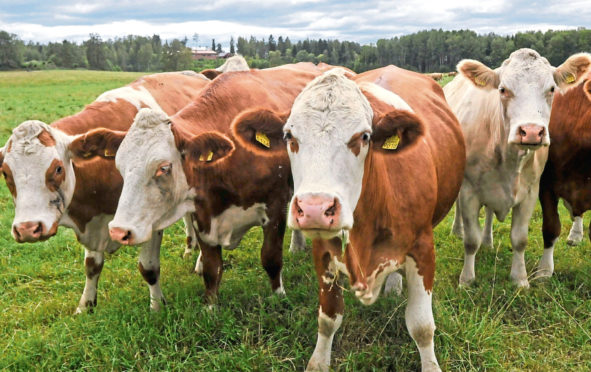Prime beef prices have bounced back and farmers are receiving some of the highest prices witnessed in many years, claims Quality Meat Scotland (QMS).
The levy body said prices had recovered from a Covid-19-driven market crash – the all-steer average deadweight price was 335.5p per kg in the week ending April 25 – caused by reduced demand for beef following the closure of restaurants and food service outlets during lockdown.
It said farmgate prices for prime beef are at their highest level for years – 390.9p per kg for the week ending August 29 – and prices for this time of year have only been higher twice in the past decade.
“The UK has one of the highest producer prices for beef across Europe and the world, and the gap has widened in the past quarter,” said QMS director of economics services Stuart Ashworth.
“That would suggest that the UK would be an attractive export market for European countries like Ireland, although it is protected from other international suppliers by EU tariffs and trade agreements.”
Mr Ashworth said despite prices firming, beef imports in the first six months of the year were lower than in 2019.
“Lower demand from out-of-home eating – a sector which is sensitive to the cost of materials used in meal preparation – is likely to have reduced demand for imported meat,” he added.
Data from QMS reveals higher volumes of cattle were processed in June and July, and despite carcase weights being lower during this period, the volume of beef produced in July was 9% higher than in the same month last year.
“The continued firmness of the producer price points towards firm consumer demand for beef,” added Mr Ashworth. He said increased home working, cooking at home and staycations had helped boost demand for beef.
“The slow return of restaurants and fast food outlets and the success of the UK’s Eat Out To Help Out initiative will also have supported demand for beef throughout August,” he said.










